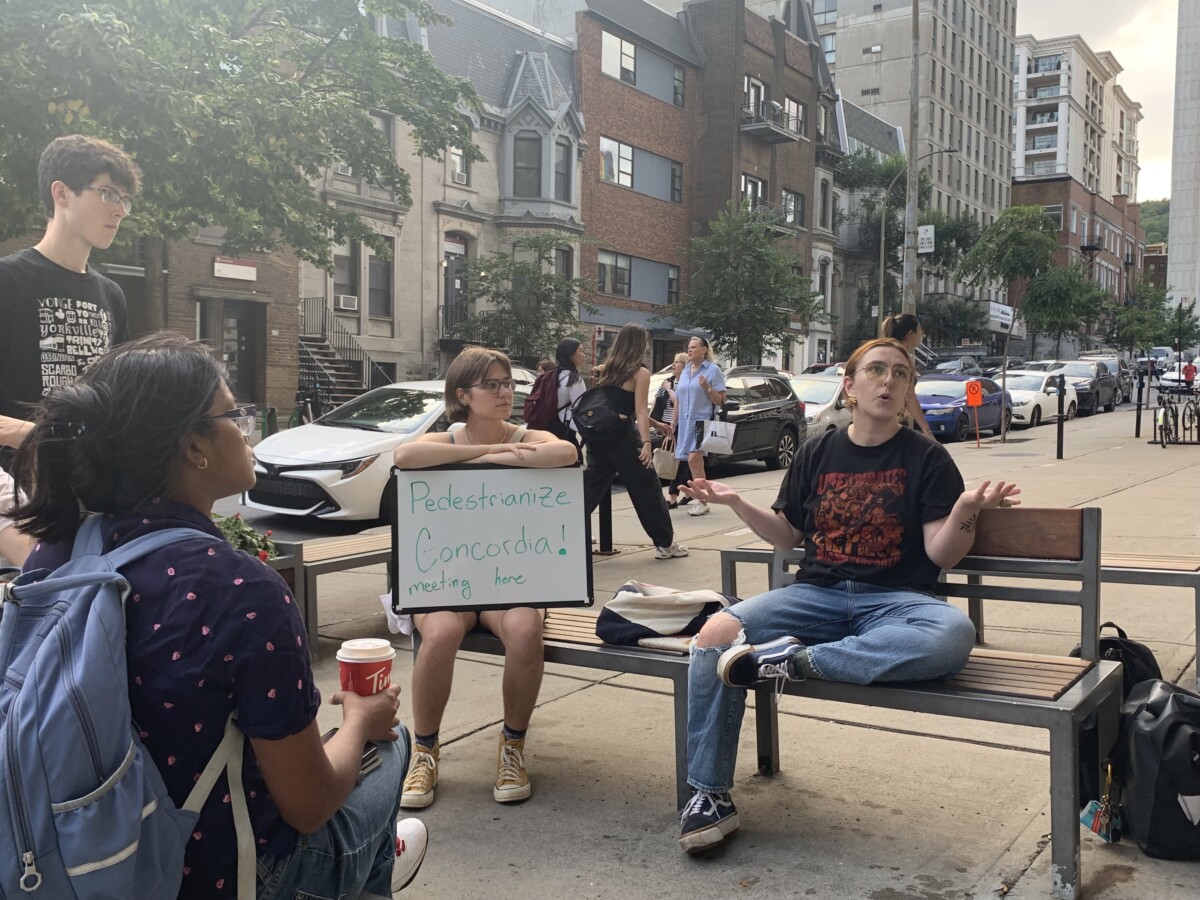Thirty-year-long legacy continued by new cohort.
On September 8, a handful of Concordia students huddled around a bench on Mackay street to discuss what they hoped would be a big change for their community.
Organised by the Arts and Science Federation of Associations (ASFA) mobilisation coordinator Lily Charette, the goal of the meeting was to discuss the long-lasting project to pedestrianise Mackay street, located on Concordia’s Sir George Williams campus.
“It’s something most people can get on board with,” said Charette. “There’s a lot of potential for building something that’s good for the community and Concordia students.”
Charette added that a pedestrianised Mackay would be a welcomed addition on campus, with the possibility of including water fountains and areas reserved for regreening, as well as a community garden.
Charette said she spent part of her summer break planning her project of a pedestrianised Mackay. She isn’t alone in her efforts.
“This project has been going on for about 30 years now,” said Dashiell Friesen, a fourth-year student in design. “We think the push is way better now than ever before.”
Friesen shares Charette’s passion for public infrastructure and transportation. He explained that attempting a pedestrianisation of Mackay could prove successful in their latest attempt, despite the project’s history of failure. He attributed his faith in the project to recent pedestrianisation efforts for Mont Royal Avenue and Wellington street.
Friesen argued that having a space for students to walk safely on campus, without the trouble of avoiding automobiles, would not only be beneficial to creating a larger sense of community on campus but would also boost sales at local shops as more on-foot traffic attracts more customers.
Additionally, Friesen expressed his desire for Concordians to have access to walkable spaces, already available to students at neighbouring universities such as McGill.
Charette and Friesen explained they aim to send a letter to university officials proposing their project, with hopes of eventually appealing it to the city of Montreal. Their efforts would culminate in temporary pedestrianisation of Mackay, which would allow for time to observe its effect.
